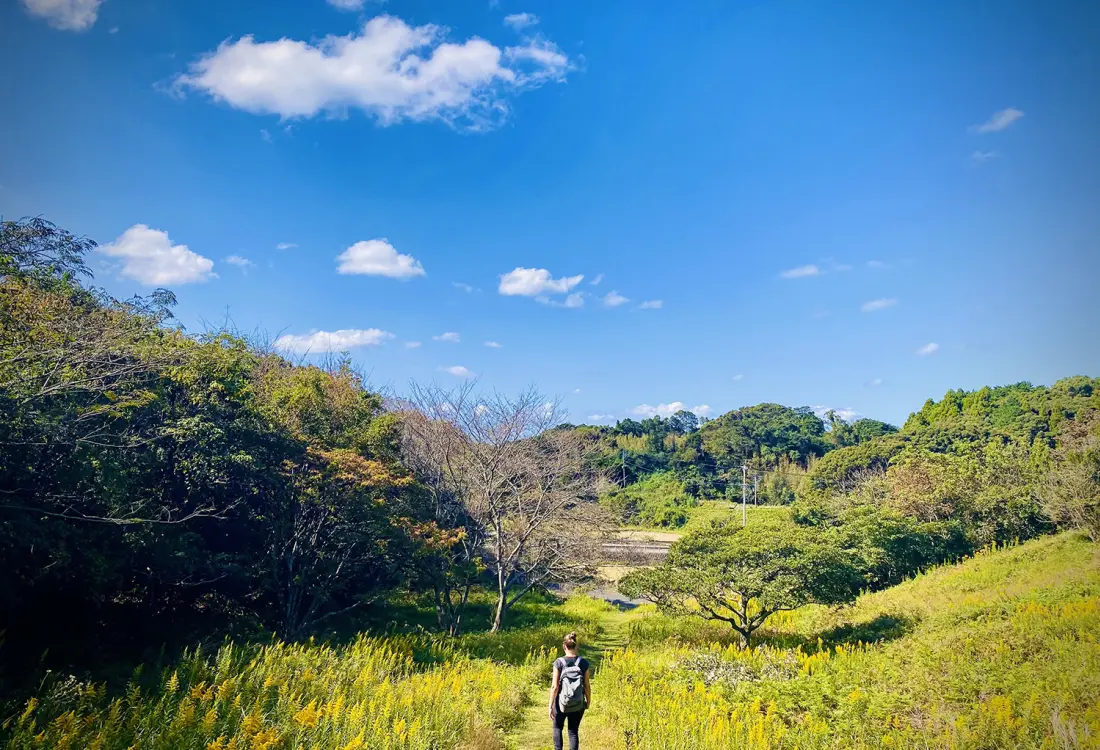
Kyushu OLLE
Karatsu Course Trekking Through Saga’s Rich History and Culture
Karatsu in Saga prefecture is an excellent place to experience the wild nature of coastal Japan, with its dense pine groves and wind-whipped shorelines, featuring indented mini-peninsulas separated by tiny waterways and inlets.
The OLLE Karatsu trekking course is directly inspired from traditional walking courses across the neighboring Korean island of Jeju, situated 300 kilometers due west of Karatsu. In the local Jeju dialect, “olle” refers to the small alleyways that connect homes with nearby roads. Since 1994, OLLE refers to a series of walking trails that circumnavigate Jeju island, and similar paths are now available in all seven prefectures of Kyushu. The local Karatsu course that winds through the Higashimatsuura peninsula was one of the first, and is well worth at least half a day of hiking.

The full Karatsu course is 11.2 kilometers long, so expect to walk for at least five hours—or longer, if you’d like to linger and visit some of the sites along the way. You can also enjoy the experience with a shorter 1.3-kilometer option. Be sure to come prepared with comfortable walking shoes, drinking water, and of course your camera!
The trail begins just behind the Momoyama Tenkaichi roadside station, where you can stock up on local snacks and grab a map from the adjacent tourist desk. We chatted with the friendly gentleman on staff, who pointed out helpful trail-related tips—and even ran after us as we entered the trail to give us some local oranges to munch on along the way.
Billed as “slow tourism in Karatsu”, the OLLE course encourages languid strolling—if not brisk hiking, for those who plan to cover the entire trail. Regardless of your inclination, you will encounter gorgeous scenery as you proceed along the course. The path is set against the backdrop of a cerulean blue sky, flanked by fields of flowers, and marked at strategic intervals by signature trail designations including colorful ribbons, wooden arrows, and other signs in the shape of a horse’s head.
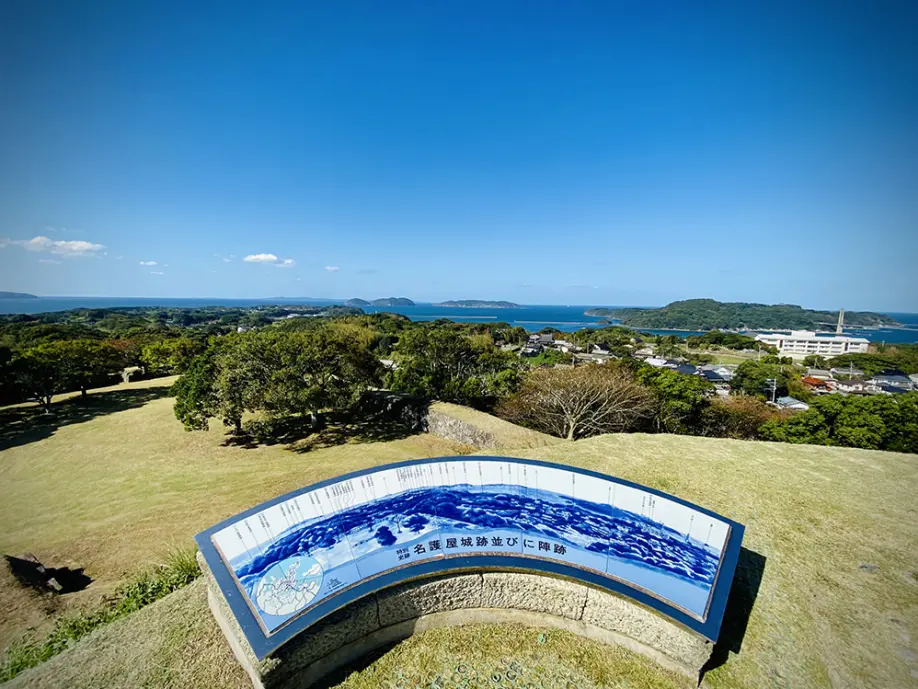
Following the “slow tourism” headline on the official pamphlet is the subhead “Trek along the Momoyama cultural trail”. The late sixteenth-century Momoyama period was a time of intensive interactions between Japan and Korea, and the course abounds with opportunities to learn about notable past events in this relationship.
Local history centers around Nagoya Castle, which stood atop a promontory on the peninsula for nearly a decade beginning in 1592, and whose remains are located just off the trail. Not to be confused with the castle of the same name in the city of Nagoya (which is written using different kanji characters, and still stands today), Karatsu’s Nagoya Castle was hastily built under the orders of shogun Toyotomi Hideyoshi to serve as a base for the (ultimately unsuccessful) invasions of China’s Ming Dynasty via the nearby Korean peninsula. The castle also served as a base where Toyotomi engaged in passionate hobbies including Noh theater and tea ceremony. A town sprung up around the castle that was home to more than 200,000 samurai and merchants from throughout Japan, and numerous daimyo (feudal lords subordinate to the shogun) built nearby encampments to support the overseas military operations. In addition to the main Nagoya Castle Ruins, the remains of 130 of these encampments are visible, with explanations provided along the trail via signboards. The encampments included those of tea ceremony master Furuta Oribe; and of Hori Hideharu, who at the tender age of 16 presided over a troop of 6,000 men.
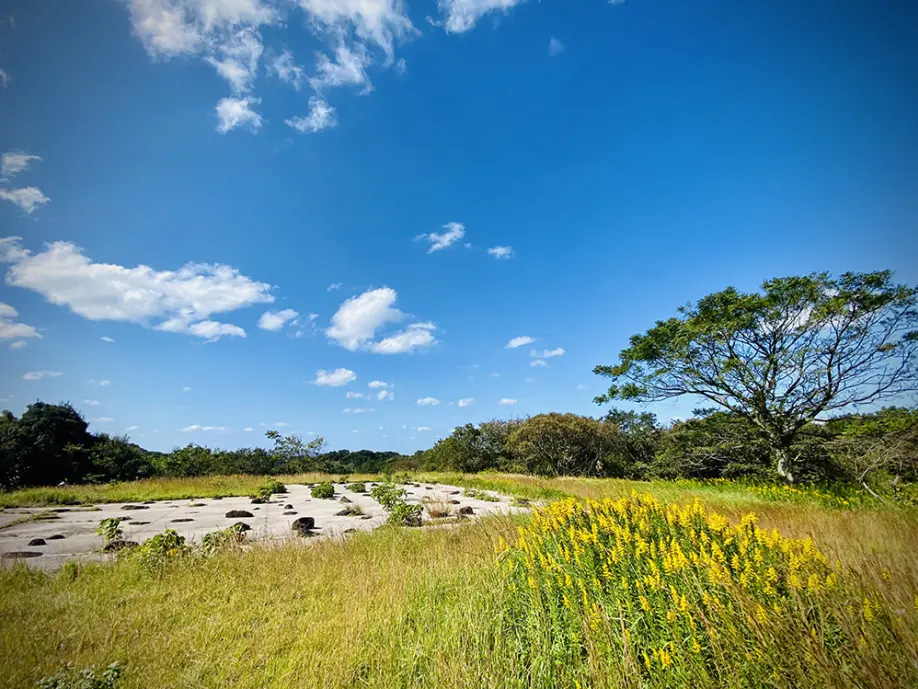
The impact from this slice of 400-year-old Japanese history still reverberates today on various levels. The rich ceramics culture that took hold in Saga prefecture and throughout Kyushu is rooted in the historical practice of bringing over potters from the Korean peninsula during the military campaigns, which resulted in the Karatsu and Arita styles of pottery. Segments of the dismantled Nagoya Castle were also used to build the nearby Karatsu Castle.
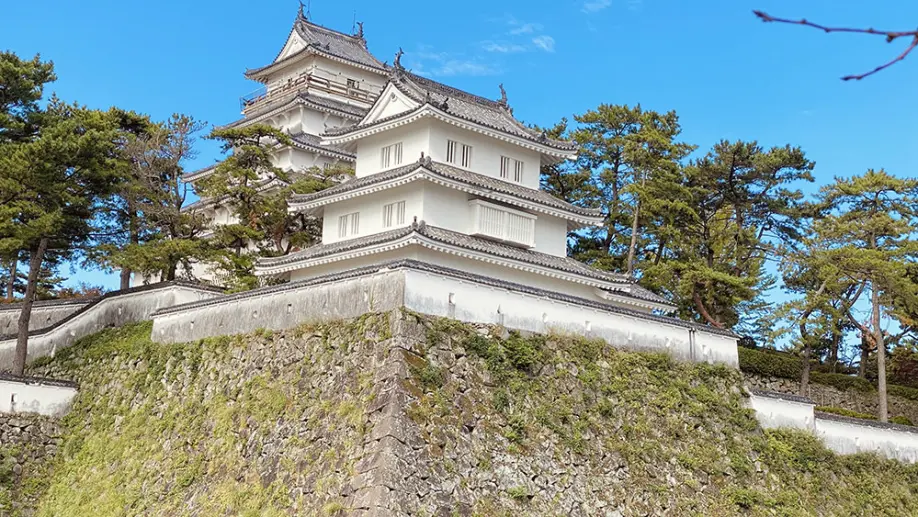
If time permits, learn more about the history of Japanese-Korean relations by visiting the Saga Prefectural Nagoya Castle Museum, which houses exhibits as well as Korean language courses and other cultural exchanges between Japan and Korea. Alternatively, contemplate this history at the site of the Nagoya Castle Ruins while taking in sweeping views of the Sea of Genkai, or while enjoying a refreshment at the Kaigetsu Tea House, which overlooks a tranquil garden.

Continue winding your way through the peninsula, stopping by additional points of interest such as the traditional thatched-roof houses of the Straw Village and the Karatsu Pottery Hinata Kiln.
If you opt for the abbreviated 1.3-kilometer course rather than the full-day hike, a good plan is to finish your walk at the museum, located next to the trail entrance, then drive up to Cape Hado at the tip of the peninsula to catch more highlights of the OLLE Karatsu course.

More specifically, don't miss the shell-adorned heart monument dedicated to lovers; Cape Hado beach, ranked among Japan’s 100 most beautiful beaches; and our personal favorite: the Tsuboyaki food stall selling fresh-grilled turban shells, abalone, oysters and squid, staffed by a team of lively and friendly women.

If you are among those who braved the entire 11-kilometer trek, you will certainly have deserved your seafood treat. But regardless of how you arrive at the cape, you are sure to be rewarded with an intriguing slice of Karatsu’s local history and culture that is naturally intertwined with the verdant Higashimatsuura peninsula on the OLLE Karatsu trail.
Karatsu trekking course
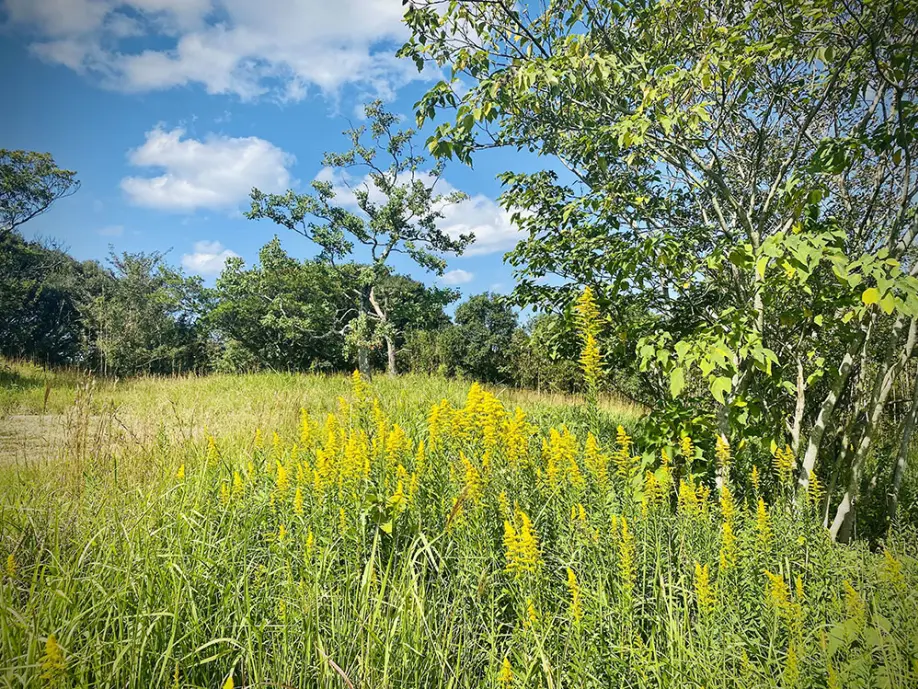
Karatsu trekking course

Tsuboyaki at Cape Hado

Higashimatsuura peninsula coastline


Kimberly Hughes
Kimberly Hughes is a freelance writer, translator, and community organizer who is originally from the desert of the southwestern U.S. and has been based in Tokyo since 2001. She is somewhat addicted to global travel, and also loves cooking, gardening and reading.

Photos by Solveig Boergen
Solveig Boergen is a Tokyo-based photographer originally from Germany who has spent more than three decades living in Asia(Japan, China, Hong Kong, Taiwan, Thailand and Nepal). Her work aims to share human stories, and to show realities that might otherwise remain unseen.Besides travel photography, she specializes in portraits that convey deep emotion, such as newborn babies with their families.
 Hiking Matsushima Olle: Course to Explore the Nature and Intriguing History of Amakusa Island
Hiking Matsushima Olle: Course to Explore the Nature and Intriguing History of Amakusa Island Mount Aso: Nature at Its Most Majestic
Mount Aso: Nature at Its Most Majestic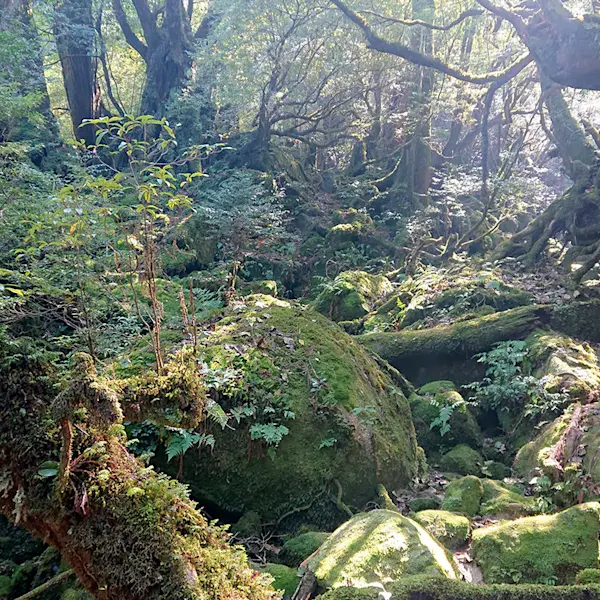 Yakushima: Trekking through Japan’s thousands-year-old forest
Yakushima: Trekking through Japan’s thousands-year-old forest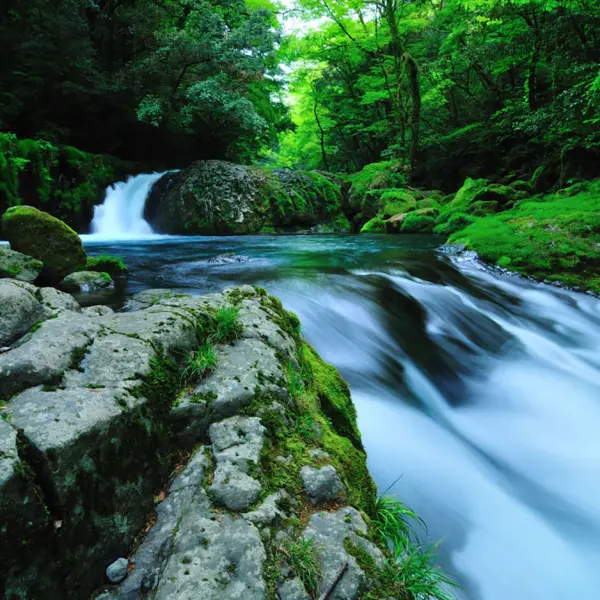 Kikuchi District - The Great Outdoors of Kyushu
Kikuchi District - The Great Outdoors of Kyushu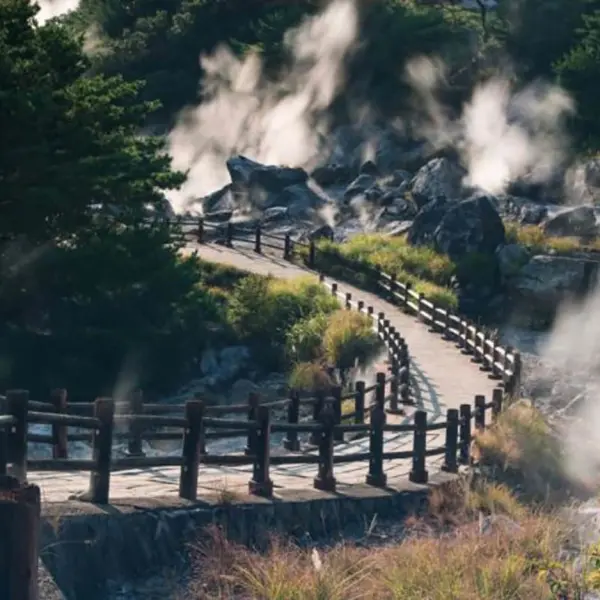 To Hell and Back: Walk Through the Steamy Hot Springs of Unzen
To Hell and Back: Walk Through the Steamy Hot Springs of Unzen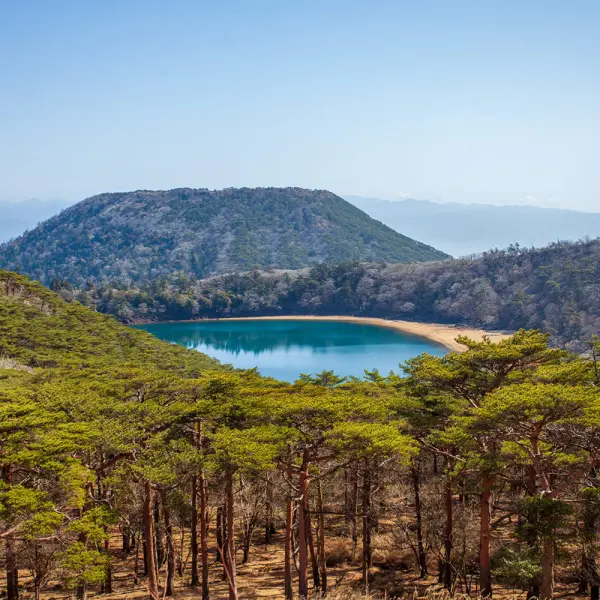 Hiking in Ebino Highlands: Explore the Crater Lakes in the Company of Friendly Deer
Hiking in Ebino Highlands: Explore the Crater Lakes in the Company of Friendly Deer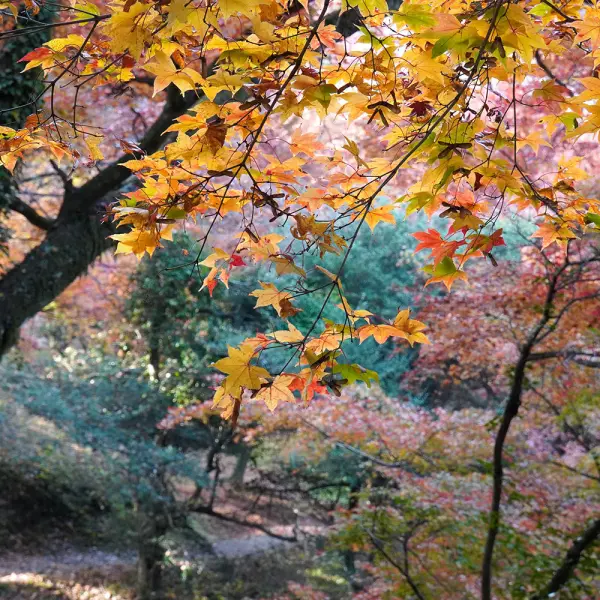 Kyushu Olle: An Autumn Hike on the Okubungo Course
Kyushu Olle: An Autumn Hike on the Okubungo Course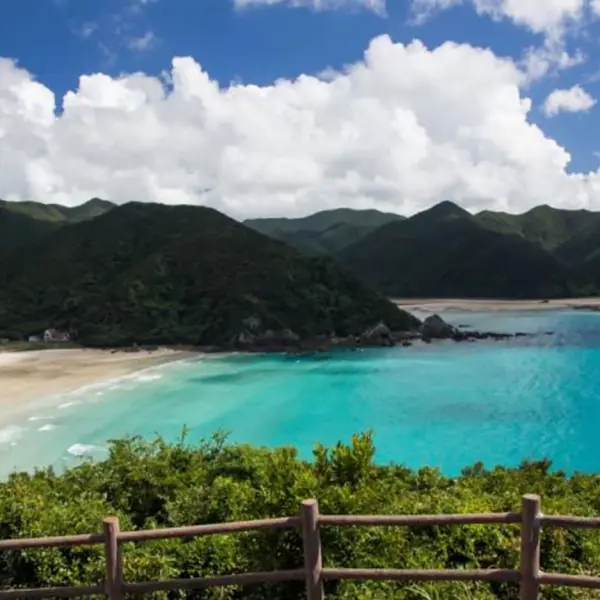 Driving Around Fukue Island: Hidden Churches and Stunning Beaches
Driving Around Fukue Island: Hidden Churches and Stunning Beaches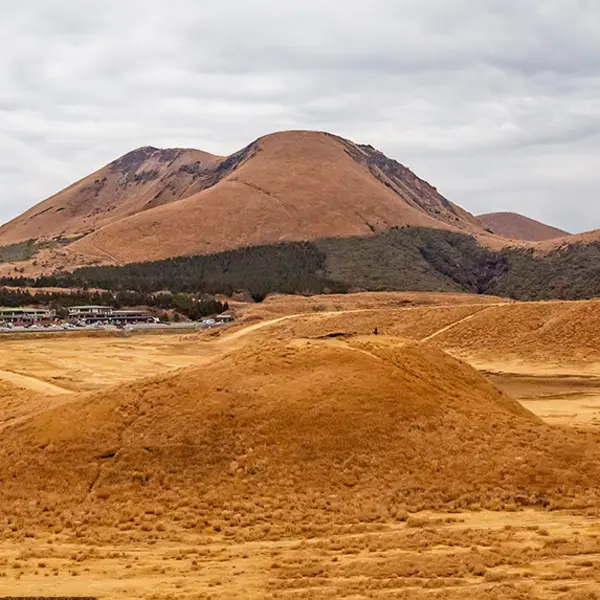 Hiking Trails at Aso Kusasenri
Hiking Trails at Aso Kusasenri Cape Toi in Miyazaki: A Festival of Colors
Cape Toi in Miyazaki: A Festival of Colors




